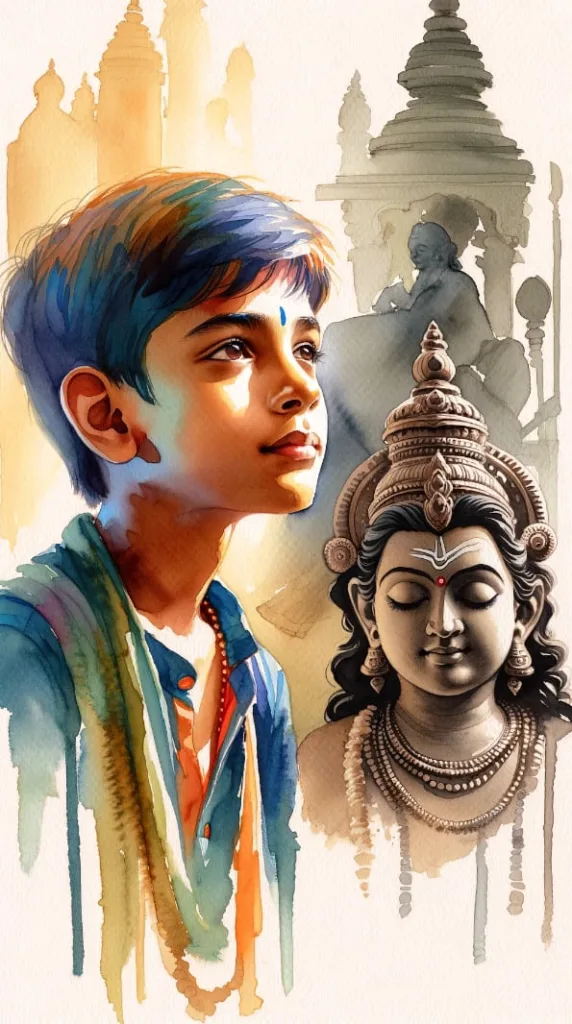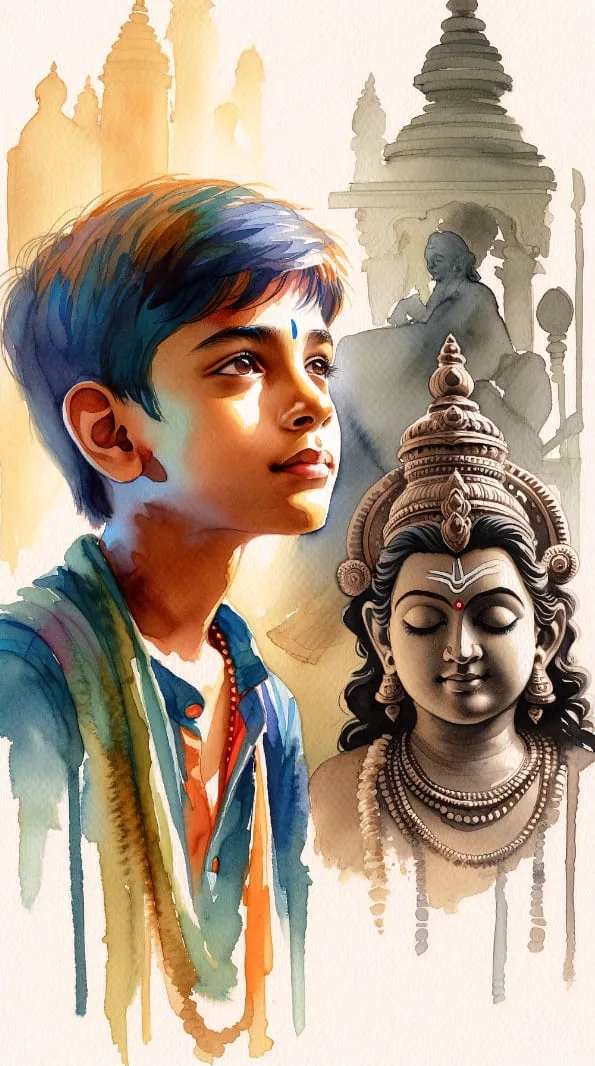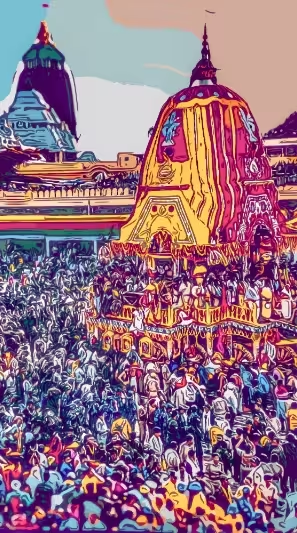
In the quaint village of Devbhoomi, nestled among the lush hills of North India, there lived a bright 10-year-old boy named Tarkik. Tarkik was known for his curious mind and a hint of scepticism that danced in his eyes. His latest intrigue was the local legend of a statue of Lord Vishnu in the nearby temple, believed to breathe once a year on Dev Uthani Ekadashi.
“Why would a statue breathe?” Tarkik pondered, his mind swirling with questions.
The Legend of Dev Uthani Ekadashi
That evening, Tarkik’s grandmother, a wellspring of stories, told him about Dev Uthani Ekadashi. “It’s the day Lord Vishnu awakens from his four-month yogic sleep,” she explained. “It’s a time of great celebration and marks the end of Chaturmas when certain religious activities are paused.”
Under the gentle glow of a kerosene lamp, Tarkik sat beside his grandmother, her face lined with the wisdom of years. As the night deepened, she began to weave the tale of Dev Uthani Ekadashi.
“Prabodhini Ekadashi, as it is also known, falls on the eleventh day in the Kartik month of our Panchang, the Hindu lunar calendar,” she started, her voice a soft melody. “It’s the day when Bhagwan Vishnu wakes from his four-month-long yogic sleep, resuming his role as the preserver of the universe.”
Tarkik listened, his scepticism momentarily forgotten.
“What do you mean by preserver of the universe, Dadi?” Tarkik asked, his curiosity piqued.
Dadi smiled and explained, “In Hindu mythology, we have the Trimurti – Brahma, Vishnu, and Mahesh (Shiva). Brahma is the creator, Srijanakarta, who forms the universe and all life within it. Vishnu, the preserver or Palankarta, maintains the harmony and order of this creation. He takes various avatars to restore balance when it’s threatened. And Shiva, the destroyer or Samharak, is responsible for transformation and renewal, paving the way for new creation. Together, they symbolise the endless cycle of existence.”

Tarkik absorbed her words, envisioning the cosmic dance of creation, preservation, and destruction.
“Now there is an interesting tale about Bhagwan Vishnu and Ma Lakshmi,” Dadi continued, seeing Tarkik’s growing interest.
“Bhagwan Vishnu, my child, was quite the workaholic. He dedicated himself day and night to assisting his devotees and preserving the universe. But such tireless work took its toll on him and those around him. When he grew tired, he would sleep, but his sleep would last for millions of years, causing an imbalance in the world and leading to destruction, affecting everything.”
Tarkik’s eyes widened, imagining a world thrown off balance by the deep slumber of a deity.
“One time, Ma Lakshmi asked Bhagwan Vishnu,” Dadi narrated with a gentle smile, “O Lord Narayana! Your endless wakefulness and prolonged sleep disrupt the world. Why not sleep on time every year? This way, there will be balance, and it will give me and others time to relax as well.”
Vishnu ji, with a knowing smile, responded to Ma Laxmi, “Devi! You are right. My actions cause difficulties for all, especially you. You hardly get time to relax and sleep. Therefore, from now on, I will sleep for four months every year during the rainy season. During this period, you and the other Gods can take your ease. This period, the four months of sleep, will be my short slumber (Alpa Nindra). This period will be highly auspicious for my devotees. During this time, those who serve me devotedly and zealously, organising the festivities of my sleeping and awakening, I will reside in their homes with you.”
Tarkik listened, enthralled by the divine negotiation that shaped the cosmos.
“So, when Lord Vishnu awakes, we celebrate Dev Uthani Ekadashi,” Dadi explained as she gently applied Teeka to his forehead, using soil from the base of a Tulsi plant. “This signifies our devotion and our connection to the divine.”
“Why are you applying soil as Teeka Dadi?” Tarkik asked.
“That’s another story,” quipped Dadi smilingly.





